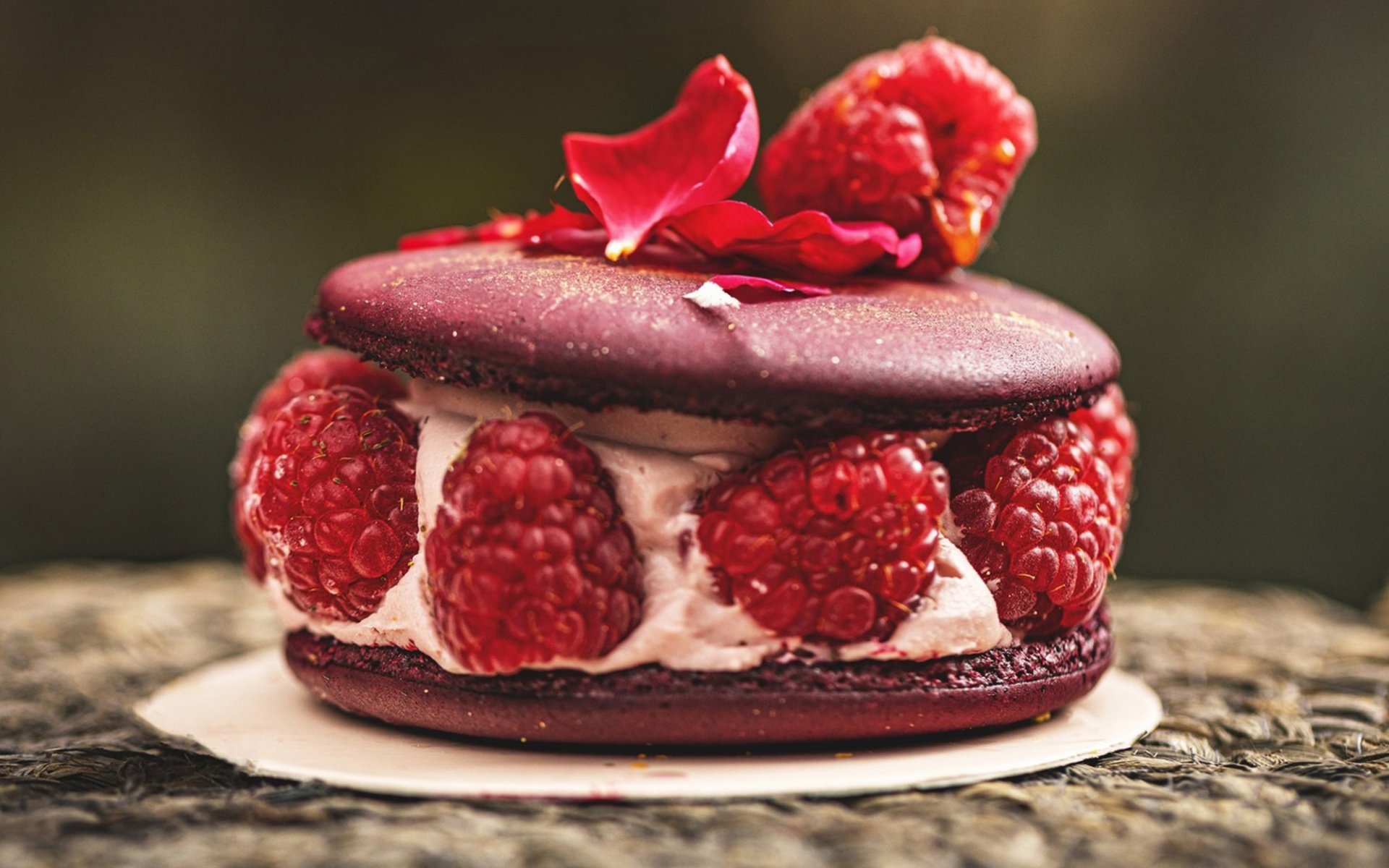Ispahan

In the world of French desserts, Ispahan stands as a testament to elegance and luxury. This is because Ispahan is a meticulously crafted macaron, born from a perfect blend of the tartness of raspberry, the sweet juiciness of lychee, and the delicate fragrance of rose reminiscent of ancient Persian gardens, creating a truly unique tasting experience.
Rooted in Ancient Persian Roses: A Fragrant History
In ancient Persia, there was a particular type of rose renowned for its exceptional fragrance, known as the Damask Rose. Cultivated for centuries, this rose was historically used to distill rosewater, produce essential oils, and create perfumes. It also became a key ingredient in culinary applications. Ancient Persians frequently incorporated rosewater and rose petals into their sweets and beverages, creating distinctive flavors and aromas. This practice laid a crucial foundation for the integration of Middle Eastern fragrances into modern desserts that have gained global acclaim.
The Birth of Ispahan by Pierre Hermé: Revolutionizing the Macaron
The origin of the Ispahan we know today was meticulously crafted in 1980 by Pierre Hermé, widely known as the Picasso of Pastry, a celebrated French pastry chef. It is said that while Pierre was working at Ladurée, the renowned pastry shop in Paris, he elevated the traditional macaron into a masterpiece. He introduced Ispahan, combining the flavors of raspberry, lychee, and rose in perfect harmony, resulting in a new, more luxurious and sophisticated macaron. This move truly revolutionized the macaron industry and set a new standard for this beloved dessert.
Inspired by the City of Ispahan: An Aroma of Paradise Gardens
Pierre stated that naming this dessert Ispahan was his way of honoring the city of Ispahan in Iran. This city has a long history and is known for its beautiful and meticulously designed Persian gardens. These gardens are filled with lush greenery, tranquil pools reflecting stunning vistas, and vibrant, fragrant flowers, especially Persian roses. Moreover, the word Ispahan in Persian also means fragrance and beauty, conveying the inspiration drawn from this exquisite natural beauty in the creation of the dessert.
Pierre discovered the beauty of the flowers in these gardens, particularly the enchanting beauty and fragrance of Persian roses. This inspired him to create a dessert that was both refreshing and imbued with the aromatic essence of roses. Thus, the Ispahan macaron, as we know it today, came into beinga poetic creation composed of scents and flavors that transport us back to the magnificent Persian gardens.
Global Prominence and Reputation: A Symbol of Luxury
Pierre Hermés Ispahan macaron stands out for its luxury and uniqueness. Anyone who tastes it is captivated, as if strolling through a Persian garden in Iran, due to its harmonious flavors and intoxicating aroma. Since its launch, Ispahan has become a prominent dessert in the culinary world and has gained widespread popularity, not only in France but globally. It has truly become one of Pierre Hermés signature dishes, solidifying his reputation among dessert connoisseurs.
Currently, Ispahan is available in patisseries and restaurants worldwide, continuing to captivate the palates of dessert lovers. Its unique flavor combination and connection to French culinary culture have made Ispahan a symbol of luxury and innovation in the world of desserts, standing alongside other classic French confections.
With its luxurious image and meticulous craftsmanship, Ispahan is more than just a dessert; it is a testament to Pierre Hermés culinary artistry in blending cultures through innovative cuisine. His reputation has, to this day, spread across the globe, and Ispahan remains one of the most beloved and acclaimed macarons of all time, inspiring pastry chefs worldwide.


